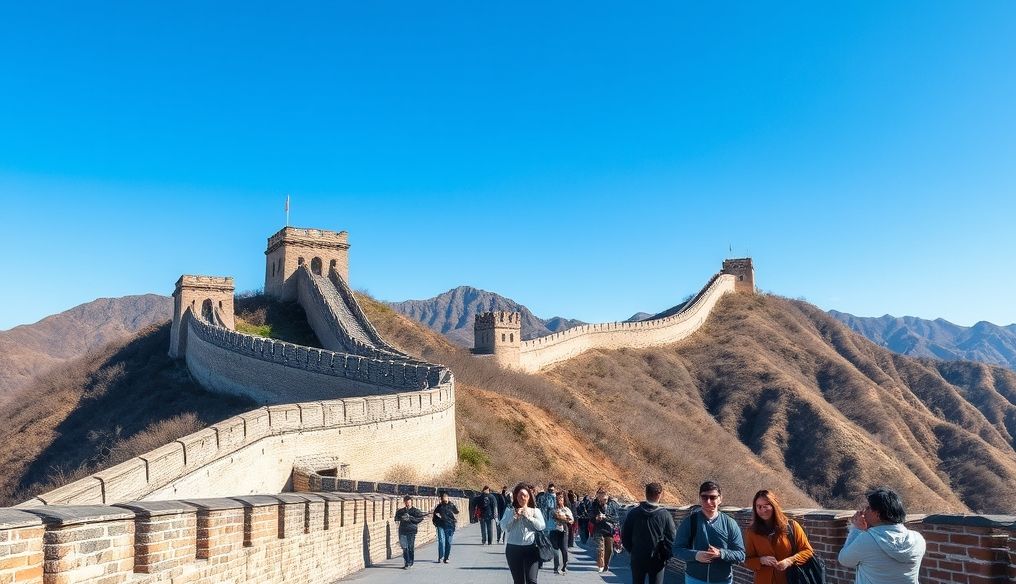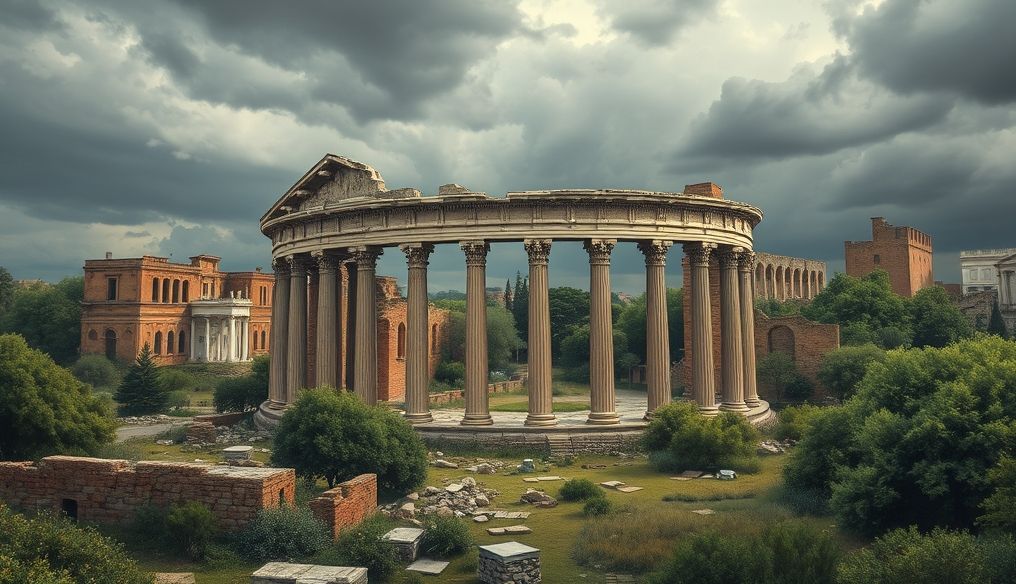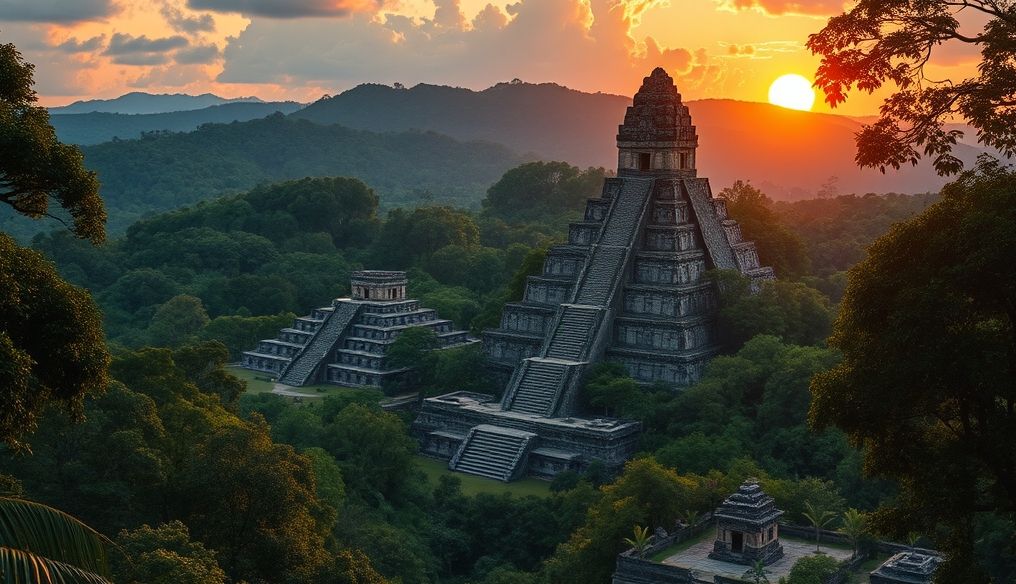The Great Wall of China: A Legendary Construction Story
The Great Wall of China, one of the New Seven Wonders of the World, represents a symbol of strength and resilience in the face of challenges. This majestic edifice extends across the rugged and diverse terrains of China, carrying within it a long and complex history of construction, expansion, and renovation. The question often arises about the real reasons behind the construction of this wall, and what historical stages it went through.
1. Motives for Construction: Protecting the Empire from Invaders
The main purpose of building the Great Wall of China was to protect the Chinese Empire from foreign invasions, especially from the nomadic tribes coming from the north. These tribes posed a constant threat to the economic and political stability of China, as they frequently raided the border areas to plunder resources and kidnap residents.
The Threat of the Xiongnu Tribes: The Xiongnu tribes, who inhabited the areas north of China, posed the greatest threat to the empire during the Qin Dynasty (221-206 BC). These tribes were characterized by their high combat skills and ability to move quickly across the vast plains, making it difficult for the Chinese army to effectively confront them. Therefore, Emperor Qin Shi Huang, the first emperor of unified China, decided to build a great wall to repel their attacks.
Protecting Trade Routes: In addition to military protection, the Great Wall of China also aimed to protect the vital trade routes that connected China to the outside world, especially the Silk Road. These routes were the lifeblood of the Chinese economy, as they transported valuable goods such as silk, tea, and spices to the West, and brought in return precious metals and other products.
2. Stages of Construction: From Earthen Walls to Stone Fortifications
The Great Wall of China was not built all at once, but went through multiple stages of construction and expansion over many centuries. The idea of building defensive walls in China began before the unification of the empire, as warring kingdoms and emirates built walls to protect their borders.
2.1 Early Walls: The Era of the Warring States
During the Warring States period (475-221 BC), many kingdoms built earthen walls to protect their territories. These walls were simple and not very durable, but they represented an initial line of defense against invaders. After the unification of China by Emperor Qin Shi Huang, these scattered walls were connected and expanded to form a single long wall.
2.2 The Qin Wall: The Real Beginning of the Great Wall
Emperor Qin Shi Huang ordered the construction of a great wall extending from Liaodong in the east to Lintao in the west. This wall was built using simple techniques, where earth and stones were compacted between wooden planks. The work was arduous and exhausting, causing the deaths of thousands of workers. It is said that the bodies of the workers buried in the wall became part of its foundations.
2.3 The Han Wall: Expansion and Fortification
During the reign of the Han Dynasty (206 BC - 220 AD), the Qin Wall was expanded and reinforced. Watchtowers were built along the wall to give early warning in the event of an attack. Military barracks were also established to house the soldiers responsible for protecting the wall.
2.4 The Ming Wall: The Image We Know Today
The largest part of the Great Wall of China that we see today was built during the reign of the Ming Dynasty (1368-1644 AD). The Ming Dynasty used advanced construction techniques, where the wall was built using bricks and stone, making it more durable and resilient. Watchtowers, forts, and castles were built along the wall, making it a very strong defensive line.
3. Wall Design: Integrated Fortifications
The Great Wall of China was not just a long wall, but an integrated defensive system that included many different elements. The wall was designed to be difficult to penetrate and capable of withstanding attacks.
3.1 The Walls: The Solid Foundation
The thickness of the walls of the Great Wall of China ranges between 5 and 7 meters, while their height ranges between 6 and 8 meters. The walls were built using bricks and stone, and were connected with strong mortar. The walls were designed to be very steep, making it difficult for invaders to climb them.
3.2 Watchtowers: Eyes and Ears of the Wall
Watchtowers were built along the wall at regular intervals. These towers were used to monitor the surrounding areas and give early warning in the event of an attack. The towers were equipped with openings to fire arrows and fire arrows at the invaders.
3.3 Forts and Castles: Defensive Pivot Points
Forts and castles were built along the wall in strategic locations. These forts and castles were used to house soldiers and store weapons and supplies. The forts and castles were designed to be able to withstand a siege for a long time.
4. Cultural Significance: A Symbol of Unity and Identity
The Great Wall of China is not just a military fortification, but also an important cultural symbol for the Chinese people. The wall represents national unity and resilience in the face of challenges. The wall is also a popular tourist attraction that attracts millions of visitors every year.
World Heritage Site: The Great Wall of China was inscribed on the UNESCO World Heritage List in 1987. The wall is considered one of the most important historical and cultural landmarks in the world.
National Symbol: The Great Wall of China appears on many Chinese national symbols, such as coins and stamps. The wall is considered a symbol of national pride and Chinese identity.
5. Challenges and Maintenance: Preserving the Legacy
Despite its strength and durability, the Great Wall of China faces many challenges, such as erosion and deterioration caused by weather conditions and human activities. The Chinese government is taking measures to preserve and restore the wall, but the task is difficult and costly.
Natural Erosion: Exposure to harsh weather conditions, such as rain, wind, and extreme heat, leads to erosion and deterioration of the wall. These factors cause cracks in the walls and the disintegration of bricks and stone.
Human Activities: Human activities, such as unregulated tourism, mining, and construction, cause damage to the wall. Measures must be taken to limit these activities and protect the wall from damage.
6. Myths and Tales: Stories from Behind the Walls
Many myths and tales have been woven around the Great Wall of China, reflecting its long and complex history. These stories tell tales of the workers who built the wall, the soldiers who defended it, and the heroes who sacrificed their lives for it.
The Legend of Meng Jiangnu: This legend tells of a woman named Meng Jiangnu, whose husband died while building the wall. Meng Jiangnu traveled to the wall to search for her husband's body, and when she did not find it, she began to cry loudly. Her tears caused part of the wall to collapse, revealing her husband's body.
7. Modern Tourism: Exploring the Greatness
The Great Wall of China has become a popular tourist destination attracting millions of visitors every year. Visitors can explore the wall and walk along its walls, and learn about its history and culture.
Sections of the Wall Open to the Public: There are many sections of the Great Wall of China open to the public, such as Badaling, Mutianyu, and Jinshanling. These sections offer stunning views and unique experiences for visitors.
8. Lessons Learned: Inspiration from the Past
The Great Wall of China offers valuable lessons about unity, resilience, and design. We can learn from the history of this great edifice and draw inspiration from it in facing the challenges we face today.
Unity and Solidarity: The Great Wall of China reminds us of the importance of unity and solidarity in achieving common goals. The wall was built thanks to the efforts of millions of workers who worked together to achieve a single goal.
In conclusion, the Great Wall of China is not just a historical landmark, but a symbol of human will and the ability to overcome difficulties. The story of building this wall is a story of resilience and challenge, and remains a source of inspiration for generations to come.




